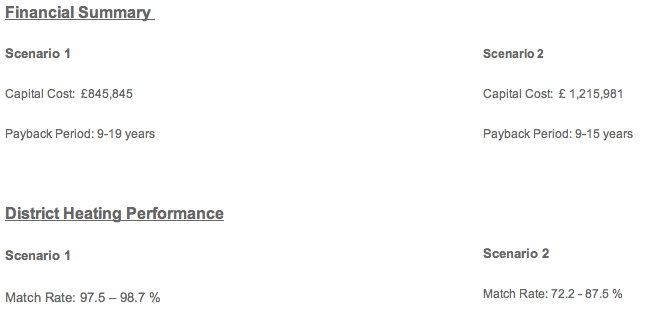
In this project we have provided a methodology for analysing a district heating network for the purpose of utilising the surplus wind power that is currently going to waste on the Islands of Orkney.
This methodology has been applied to two district heating scenarios and a financial analysis has been applied to both.
For the first scenario the district heating network provides heating the vast majority of the time. For the second scenario the district heating scheme does not perform as well due to an increased heating demand.
The key results for both scenarios, for which the council will base their investment decision on are listed below.


THE FINAL WORD...
The viability of both of the scenarios investigated in this project depends on the council’s willingness to invest based on the capital cost and payback periods presented and the ability of the surplus electricity and thermal storage to provide reliable heating on demand.
It was discovered that the payback period is heavily reliant on the cost to the council to buy the surplus electricity from the utility company. Consequently, the viability of the two scenarios is dependent on the price that the council can negotiate with the energy company.
However, we believe that the council may be able to negotiate a low price for the surplus electricity since the energy company does not currently have an interface in which to use and sell the electricity. A district heating scheme would provide such an interface and provide a method of utilising the surplus electricity that is currently going to waste. For this reason we believe that the council could achieve a low price for the electriicty and the payback period will approach the lower end of the ranges presented above.